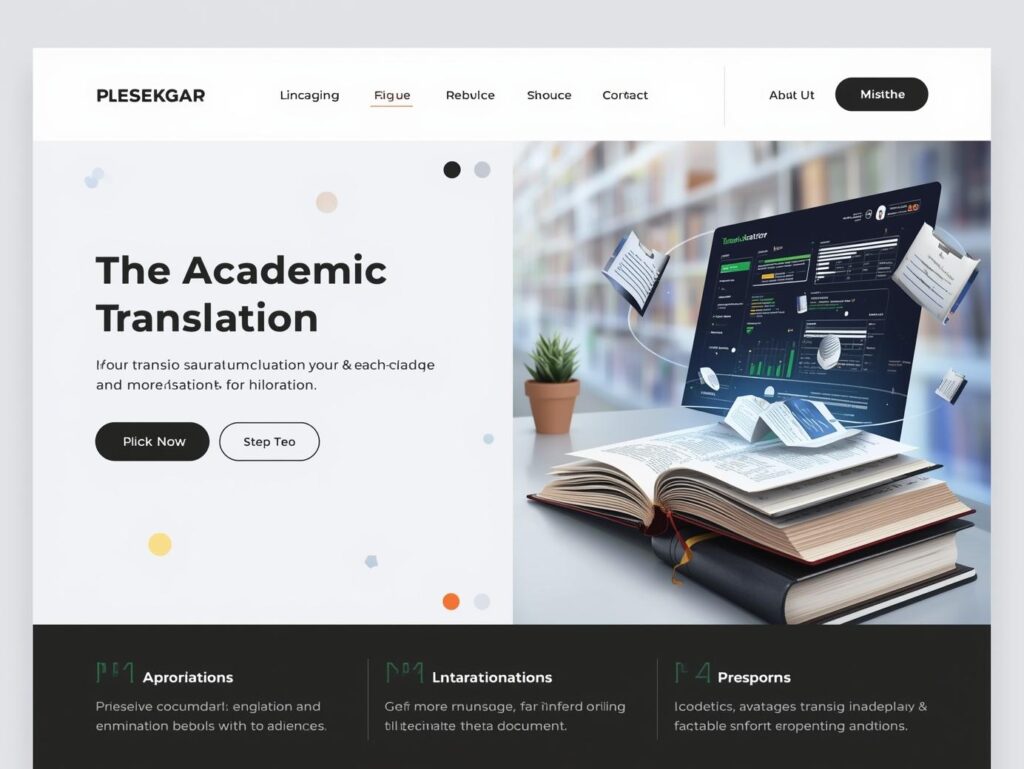Academic Translation: Bridging Cultures and Knowledge Domains
Academic translation is a specialized field within language services that involves translating scholarly materials across different languages while maintaining the integrity, nuance, and rigor of the original content. Unlike general translation, academic translation demands an in-depth understanding of specific disciplines, familiarity with academic conventions, and meticulous attention to detail, ensuring the translated work upholds the credibility and clarity necessary for scholarly communication. As globalization accelerates the dissemination of research, academic translation plays a vital role in fostering international collaboration, expanding access to knowledge, and promoting cross-cultural understanding.
The Significance of Academic Translation in the Global Knowledge Economy
In an era where scientific breakthroughs, technological advancements, and innovative research are often published in a language barrier-limited environment, academic translation acts as a conduit for knowledge transfer. For instance, a groundbreaking study published in Japanese or Chinese may not reach the broader scientific community unless accurately translated into English, which remains the lingua franca of academia. According to a 2021 report by the UNESCO Institute for Statistics, nearly 80% of scientific literature is published in English, yet the majority of research originates from non-English-speaking countries. Academic translation helps democratize access, ensuring that valuable insights are not confined by linguistic borders.
Furthermore, academic translation supports policymakers, educators, and practitioners worldwide by providing access to research findings that influence public health policies, environmental strategies, and technological innovations. For example, translating epidemiological studies from regions heavily affected by infectious diseases can inform global responses, especially during pandemics like COVID-19. Thus, academic translation is not merely about language conversion but about facilitating evidence-based decision-making on a global scale.
Core Challenges in Academic Translation
Academic translation presents unique challenges rooted in the complexity of scholarly texts. Technical accuracy is paramount; even minor errors can distort meaning, leading to misinterpretation or misinformation. Scientific terminology, which often varies across languages and disciplines, requires precise knowledge. For example, translating medical terms like “myocardial infarction” must be done with utmost accuracy, respecting both clinical and linguistic nuances.
Another challenge is maintaining the tone, style, and structure inherent to academic writing. Scholarly texts often feature specialized jargon, complex sentence structures, and discipline-specific conventions. An effective translator must grasp these conventions to produce a coherent and academically rigorous translation. Moreover, cultural differences can influence the presentation of arguments, data interpretation, and citation practices, necessitating cultural sensitivity and contextual understanding.
The multilingual nature of academia also introduces issues related to language standardization and the availability of qualified translators. Many languages lack extensive repositories of trained academic translators, which can impede the quality of translations. Additionally, the rise of open-access platforms and preprints has increased demand for rapid yet accurate translations, challenging translators to balance speed and quality.
Best Practices and Strategies in Academic Translation
To address these challenges, several best practices have emerged. First, collaboration with subject matter experts (SMEs) is essential; translators often work alongside researchers or specialists to verify technical accuracy. For instance, a translator working on a pharmacology paper might consult a chemist or medical professional to ensure terminological precision.
Second, developing comprehensive glossaries and translation memory databases enhances consistency across documents. These tools store vetted terminology and previous translations, facilitating uniformity and efficiency. For example, organizations like the European Union utilize extensive translation memories to maintain consistency across multilingual legislation.
Third, rigorous editing and peer review processes are integral. After initial translation, texts undergo multiple rounds of review by bilingual experts to identify and correct inaccuracies, ambiguities, or stylistic inconsistencies. This process mirrors the peer review system in academia, emphasizing quality assurance.
Fourth, embracing technological advancements such as machine translation (MT) and artificial intelligence (AI) can augment human efforts. While MT has improved significantly, especially with neural models like Google Translate’s neural machine translation, it still requires post-editing by skilled translators to ensure fidelity and contextual appropriateness, especially in specialized fields.
The Role of Academic Translation in Open Science and Digital Era
The digital transformation has revolutionized academic translation, making research more accessible and collaborative. Open science initiatives advocate for free and open access to scholarly outputs, which increases the demand for rapid and accurate translations to reach diverse audiences. Platforms like Europe PMC and ResearchGate facilitate sharing, but without proper translation, non-English research remains less accessible.
Moreover, the rise of multilingual journals and conferences necessitates high-quality academic translation services. These platforms foster international dialogue, enabling researchers from different linguistic backgrounds to share findings effectively. For example, the Chinese Academy of Sciences publishes numerous journals that require translation into English, promoting Chinese scientific contributions on the world stage.
In addition, multilingual machine translation tools are increasingly integrated into academic workflows, providing preliminary drafts that human translators refine. This synergy enhances efficiency, especially when dealing with large volumes of content, such as theses, dissertations, or conference proceedings.
Ethics and Quality Assurance in Academic Translation
Maintaining ethical standards in academic translation is critical. Translators must ensure confidentiality, especially when handling unpublished data or proprietary research. They also bear responsibility for accurately representing the author’s intent without introducing bias or distortion.
Quality assurance involves adherence to discipline-specific standards, rigorous fact-checking, and consistency. Many organizations adopt ISO standards for translation services, such as ISO 17100, which specify requirements for translation processes, resources, and quality management.
Furthermore, accrediting bodies like the American Translators Association (ATA) and the Institute of Translation and Interpreting (ITI) offer certification programs that validate translators’ expertise in academic and technical translation, assuring clients of professionalism and competence.
Conclusion
Academic translation is a crucial enabler of international scholarly communication, fostering the global exchange of ideas, innovations, and knowledge. Its success hinges on specialized expertise, meticulous processes, and technological integration to overcome linguistic, technical, and cultural challenges. As the academic landscape continues to evolve in the digital age, the importance of high-quality academic translation will only grow, underpinning efforts toward open science, cross-cultural collaboration, and the democratization of knowledge.
